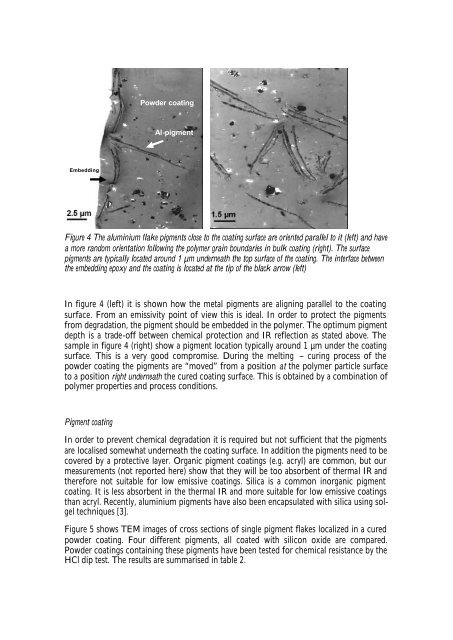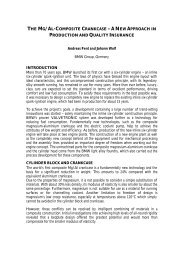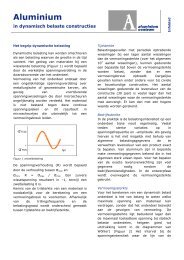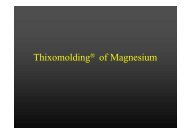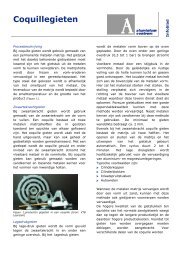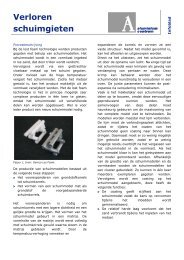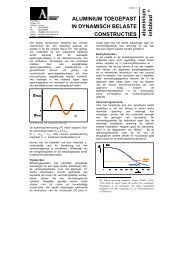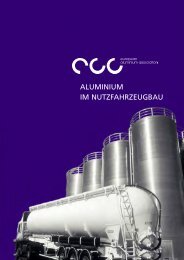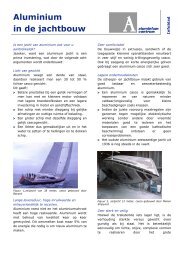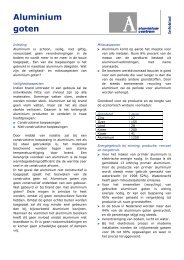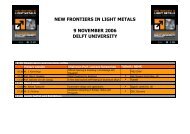2-Dr. Merete Hallenstvet - Het Aluminium Centrum
2-Dr. Merete Hallenstvet - Het Aluminium Centrum
2-Dr. Merete Hallenstvet - Het Aluminium Centrum
Create successful ePaper yourself
Turn your PDF publications into a flip-book with our unique Google optimized e-Paper software.
Powder coatingAl-pigmentEmbeddingFigure 4 The aluminium flake pigments close to the coating surface are oriented parallel to it (left) and havea more random orientation following the polymer grain boundaries in bulk coating (right). The surfacepigments are typically located around 1 µm underneath the top surface of the coating. The interface betweenthe embedding epoxy and the coating is located at the tip of the black arrow (left)In figure 4 (left) it is shown how the metal pigments are aligning parallel to the coatingsurface. From an emissivity point of view this is ideal. In order to protect the pigmentsfrom degradation, the pigment should be embedded in the polymer. The optimum pigmentdepth is a trade-off between chemical protection and IR reflection as stated above. Thesample in figure 4 (right) show a pigment location typically around 1 µm under the coatingsurface. This is a very good compromise. During the melting – curing process of thepowder coating the pigments are “moved” from a position at the polymer particle surfaceto a position right underneath the cured coating surface. This is obtained by a combination ofpolymer properties and process conditions.Pigment coatingIn order to prevent chemical degradation it is required but not sufficient that the pigmentsare localised somewhat underneath the coating surface. In addition the pigments need to becovered by a protective layer. Organic pigment coatings (e.g. acryl) are common, but ourmeasurements (not reported here) show that they will be too absorbent of thermal IR andtherefore not suitable for low emissive coatings. Silica is a common inorganic pigmentcoating. It is less absorbent in the thermal IR and more suitable for low emissive coatingsthan acryl. Recently, aluminium pigments have also been encapsulated with silica using solgeltechniques [3].Figure 5 shows TEM images of cross sections of single pigment flakes localized in a curedpowder coating. Four different pigments, all coated with silicon oxide are compared.Powder coatings containing these pigments have been tested for chemical resistance by theHCl dip test. The results are summarised in table 2.


